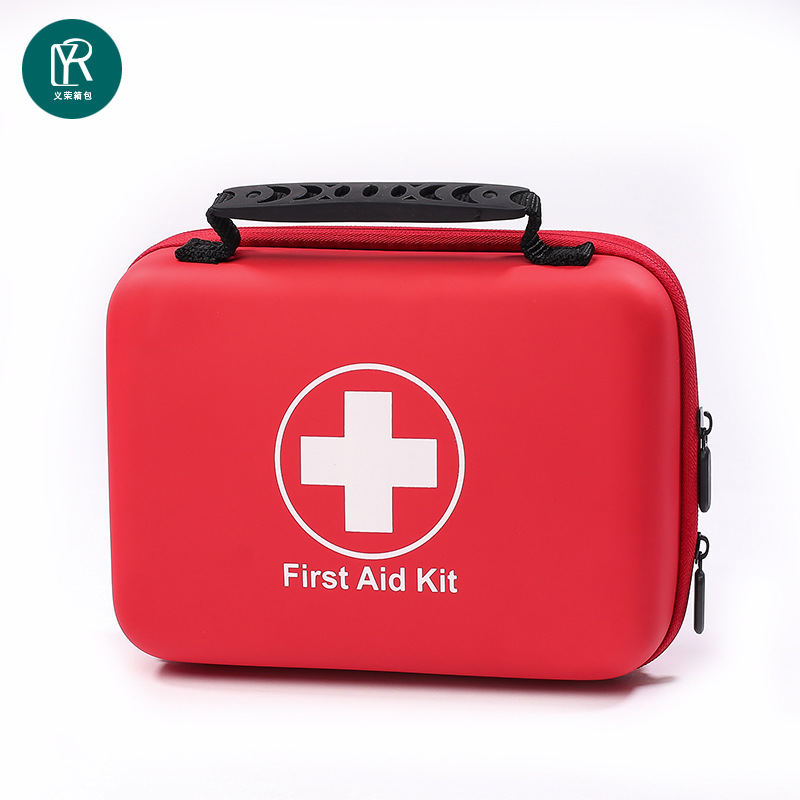Key Design Considerations for EVA Protective Bags for Portable Medical Devices
In the medical device supply chain, the “last mile” of protection for portable medical devices directly determines their lifespan and safety. EVA, with its lightweight, impact-resistant, and easily shaped properties, is the preferred material for these bags. For global wholesale buyers, an EVA protective bag that meets market demands must strike a precise balance between protective performance, compliance, portability, and customization. The following analyzes the key design dimensions of EVA protective bags for portable medical devices, focusing on key concerns of buyers.
I. Protective Performance: The “First Line of Security” for Medical Devices
Protection is the core mission of EVA medical protective bags. Their design must focus on multi-scenario damage resistance, addressing risk points throughout the entire supply chain, including transportation, storage, and field use.
Impact-resistant structural design: Utilizing a multi-layer composite EVA material, the outer layer utilizes a hard EVA with a density of ≥60D to protect against external impacts, while the inner layer utilizes a 20-30D soft EVA to provide a cushioning layer. Key areas (such as the device screen and precision probes) are designed with additional “raised protective ribs” to reinforce the structure and reduce drop impacts. The device must meet ISTA 3A transport packaging testing standards (1.2-meter drop on six sides without damage).
Penetration resistance and environmental adaptability: To protect against liquids (such as disinfectants and blood) and dust in medical settings, the protective bag’s surface requires a PU coating to achieve IP64 dust and water resistance. Furthermore, considering the requirements for use in extreme environments, the EVA material must maintain elasticity within the temperature range of -20°C to 60°C to prevent cracking at low temperatures and deformation at high temperatures.
Shock-absorbing and secure system: A modular foam compartment is used internally with pre-cut grooves precisely aligned to the device’s size, ensuring the device remains secure within the bag. Small accessories (such as charging cables and probe covers) require separate elastic straps or mesh pockets to prevent them from moving and scratching the device surface.
II. Compliance: Breaking through the “barriers to entry” in the global market
Global medical procurement places stringent demands on product compliance. EVA protective bags must be designed to meet the certification standards of the target market in advance to avoid customs clearance and sales risks for buyers.
Medical-grade material certification: All EVA and auxiliary materials (such as glue and sutures) that come into contact with medical devices must meet medical-grade standards, such as FDA 21 CFR Part 177 food contact certification and EU CE MDR Class I certification, ensuring the material is odorless and does not release hazardous substances (such as phthalates and heavy metals).
Environmental Protection and Recyclability: In compliance with EU RoHS 2.0 and US EPA environmental regulations, recyclable EVA is preferred. The design minimizes non-disassembled components (e.g., avoiding the mixing of glue and metal components) to facilitate subsequent recycling and help buyers meet end-customer ESG (Environmental, Social, and Governance) requirements.
Marking and Traceability: The bag body must include a permanent marking area, which can be laser-engraved or silk-screened with a “Medical Protection Specialty” logo and material certification number. The internal label must include information such as the production batch and date to support supply chain traceability for buyers and comply with ISO 13485 medical device quality management system requirements.
III. Ergonomics and Portability: Adapting to the “mobility needs” of medical scenarios
Portable medical equipment often needs to be moved between hospital wards, emergency response sites, and free clinics.
The design of the protective bag must balance lightweightness and ease of use to reduce the user’s operational burden. Lightweight and Balanced Load-Bearing: While ensuring adequate protection, the weight of a single protective bag (excluding equipment) is kept to ≤1.5kg. The shoulder straps are made of wide (≥5cm) breathable mesh with adjustable chest buckles to distribute shoulder pressure, making it suitable for medical personnel carrying for extended periods.
Quick Access: The bag features a double zipper with Velcro quick-release buckles. The zipper pulls are anti-slip to ensure quick opening even when wearing gloves. An emergency access hatch is designed on the side of the bag for frequently used accessories (such as blood glucose test strips) without opening the main bag.
Size Compatibility: Based on common sizes of portable medical devices (such as ultrasound probes, ECG monitors, and portable ventilators), 3-5 standardized sizes are designed (e.g., 20×15×8cm, 30×20×12cm). Custom sizes are also supported, allowing for quick adaptation to specific equipment by adjusting the EVA die-cutting mold.
IV. Customization and Brand Adaptation: Empowering Buyers to Compete Differentiated
Global wholesale buyers need customized products to meet the individual needs of end customers. EVA protective bags must be designed with flexible adaptability to enhance the added value of their products.
Appearance Customization: Bag color customization is supported (e.g., matching the hospital’s VI color or the device’s brand color), with matte and glossy finishes available. The buyer’s logo or end-user logo (e.g., hospital name, device brand) can be silk-screened on the side or front of the bag to enhance brand recognition.
Functional Module Customization: Customized features can be added based on device characteristics. For example, for devices requiring low-temperature storage (such as vaccine refrigeration boxes), insulation can be embedded in the EVA interlayer to enhance thermal insulation. For devices requiring charging, a cable hole can be reserved and equipped with a waterproof seal to prevent liquid ingress during charging.
Mass Production Adaptability: The design utilizes “modular molds.” For example, protective bags of different sizes can share some mold components, reducing customized mold costs. Production processes are also optimized to ensure delivery times for custom orders are ≤15 days, meeting buyers’ bulk replenishment needs.
V. Durability and Cost Balancing: Buyers’ Long-Term Value Considerations
Professional buyers prioritize product value. The design of EVA protective bags must strike a balance between durability and cost control to reduce buyers’ long-term replacement costs.
Easy to Clean and Durable: The surface PU coating must be stain-resistant and can be directly disinfected with 75% alcohol, leaving no marks or fading. Thickened EVA or PVC laminate is used on the corners to extend the lifespan of areas susceptible to wear (under normal use, the protective bag should have a lifespan of ≥3 years).
Maintainable Structure: Avoid complex splicing. For example, use Velcro to attach the foam insulation layer, allowing for individual removal and replacement. Zippers from durable brands like YKK are used, ensuring a zipper lifespan of 5,000 or more, minimizing the need for repairs or replacements.
Cost-Optimized Design: For bulk orders, a “standardization + partial customization” approach can be used to control costs. For example, standardized molds can be used for the main structure, with customization limited to details like logos and colors. This approach not only meets individual needs but also reduces mold development and production costs.
Post time: Oct-20-2025





